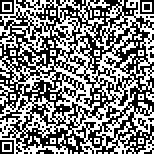| 引用本文: |
-
蒙静,华璀,张建兵,卢远.1995年-2015年广西海岸带养殖用地的时空分布[J].广西科学,2017,24(2):135-143. [点击复制]
- MENG Jing,HUA Cui,ZHANG Jianbing,LU Yuan.Analyses on Spatial-Temporal Evolution Pattern of Coastal Aquaculture in Guangxi Coastal Zone in the 1995-2015 Years[J].Guangxi Sciences,2017,24(2):135-143. [点击复制]
|
|
| |
|
|
| 本文已被:浏览 2841次 下载 1671次 |

码上扫一扫! |
| 1995年-2015年广西海岸带养殖用地的时空分布 |
|
蒙静1,2,3, 华璀1,2,3, 张建兵1,2,3, 卢远1,2,3
|
|
|
| (1.广西师范学院, 北部湾环境演变与资源利用教育部重点实验室, 广西南宁 530001;2.广西师范学院, 广西地表过程与智能模拟重点实验室, 广西南宁 530001;3.广西师范学院地理科学与规划学院, 广西南宁 530001) |
|
| 摘要: |
| [目的]海岸带由于其生态功能的重要性和脆弱性,一直是生态相关研究的焦点区域,其景观格局变化及环境效应尤受关注。由于广西北部湾滨海养殖用地的快速扩增,导致该区景观格局显著改变,因此开展其时空演变特征研究,以综合评价其环境效应。[方法]以北部湾滨海1995年、2000年、2005年、2010年和2015年Landsat多光谱遥感影像为数据源,采用MNDWI水体指数(Madify Normalize Difference Water Index)和面向对象分类方法,提取各期研究区养殖用地信息,并基于土地利用动态变化模型,综合分析研究区养殖用地20年的时空演变特征。[结果]20年来北部湾滨海养殖用地时空演变显著,在数量上先增后减,养殖面积由1995年的9 024.03 hm2增加到2010年的41 153.58 hm2,而后逐年减至2015年的38 903.95 hm2;空间上逐年向西北移动,并整体分布于北海滨海一带。[结论]北部湾滨海养殖用地的增长源主要为耕地和近岸海域,而去向则主要为建设用地和废弃地,导致该区高生态服务价值用地(耕地、滩涂等)减少,环境效应出现负面趋向(养殖污染、自然岸线破坏等)。 |
| 关键词: MNDWI水体指数 滨海养殖 时空演变 环境效应 广西北部湾 |
| DOI:10.13656/j.cnki.gxkx.20170329.002 |
| 投稿时间:2017-01-14 |
| 基金项目:广西自然科学基金项目(2014GXNSFAA118293)资助。 |
|
| Analyses on Spatial-Temporal Evolution Pattern of Coastal Aquaculture in Guangxi Coastal Zone in the 1995-2015 Years |
|
MENG Jing1,2,3, HUA Cui1,2,3, ZHANG Jianbing1,2,3, LU Yuan1,2,3
|
| (1.Key Laboratory of Environment Change and Resources Use in Beibu Gulf, Guangxi Teachers Education University, Nanning, Guangxi, 530001, China;2.Guangxi Key Laboratory of Earth Surface Processes and Intelligent Simulation, Guangxi Teachers Education University, Nanning, Guangxi, 530001, China;3.School of Geography and Planning, Guangxi Teachers Education University, Nanning, Guangxi, 530001, China) |
| Abstract: |
| [Objective] Coastal zone has been the core area in ecological related research because of the importance and vulnerability of its ecological function, and its landscape pattern changes and environmental effects are of particular concern.Due to the rapid expansion of the coastal land of Guangxi Beibu Gulf, the landscape pattern of the area changed significantly, so it was necessary to make a comprehensive evaluation of environmental effects by analyzing the spatial pattern of Beibu Gulf coastal aquaculture land.[Methods] Based on the Landsat TM/ETM+ images of Beibu Gulf coastal aquaculture land in 1995, 2000, 2005, 2010, 2010 and 2015, the MNDWI and object-oriented classification method were used to extract the information of the aquaculture land in each research area, and based on land use Dynamic change model, the spatial and temporal evolution characteristics of the aquaculture land during the recent 20 years were analyzed comprehensively.[Results] Results showed that from 1995 to 2015, the spatial temporal evolution in Guangxi Beibu Gulf coastal changed significantly.The aquaculture area increased first and then decreased.From 1995 to 2010, the aquaculture area increased from 9 024.03 hm2 to 41 153.58 hm2, and then decreased to 38 903.95 hm2 in 2015.Comprehensive analysis leaded to the conclusion that the gravity center of the aquaculture area moved to the northwest on the whole, and the aquaculture land mainly distributed in Beihai.[Conclusion] The growth sources of aquaculture land in Beibu Bay were mainly cultivated land and coastal waters, while the loss of aquaculture land were mainly turned into construction land and abandoned land, which leaded to the reduction of high ecological service value land (such as arable land and tidal flats), and the negative environmental effect (such as aquaculture pollution and natural coastline destruction). |
| Key words: modify normalize difference water index coastal aquaculture spatial and temporal change environmental effects Guangxi Beibu Gulf coastal |
|
|
|
|
|